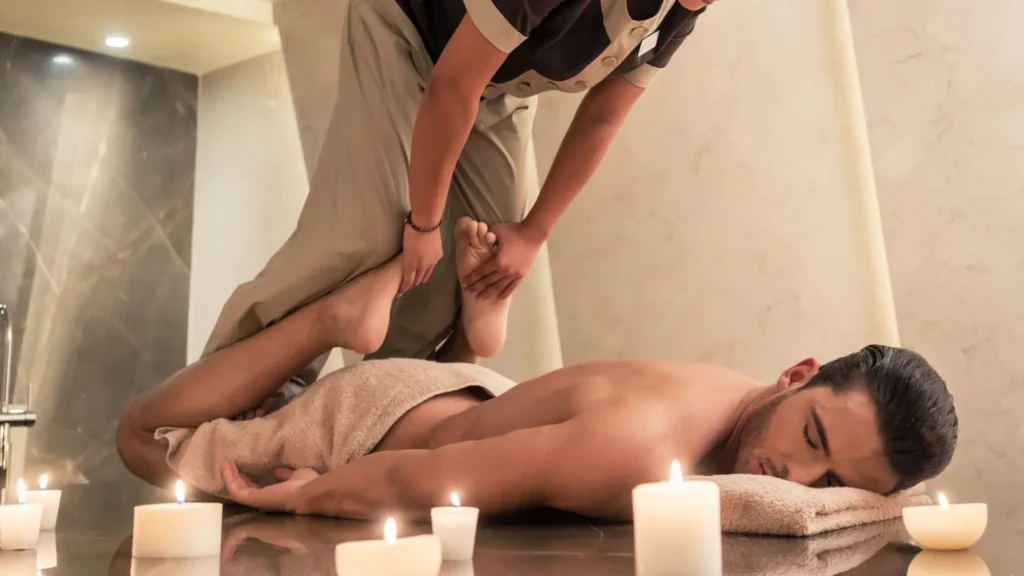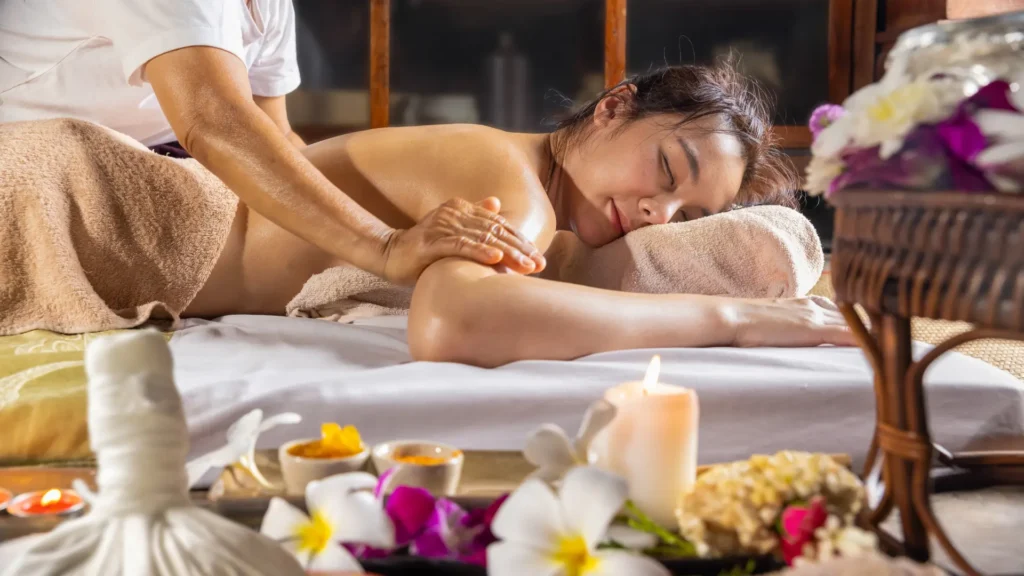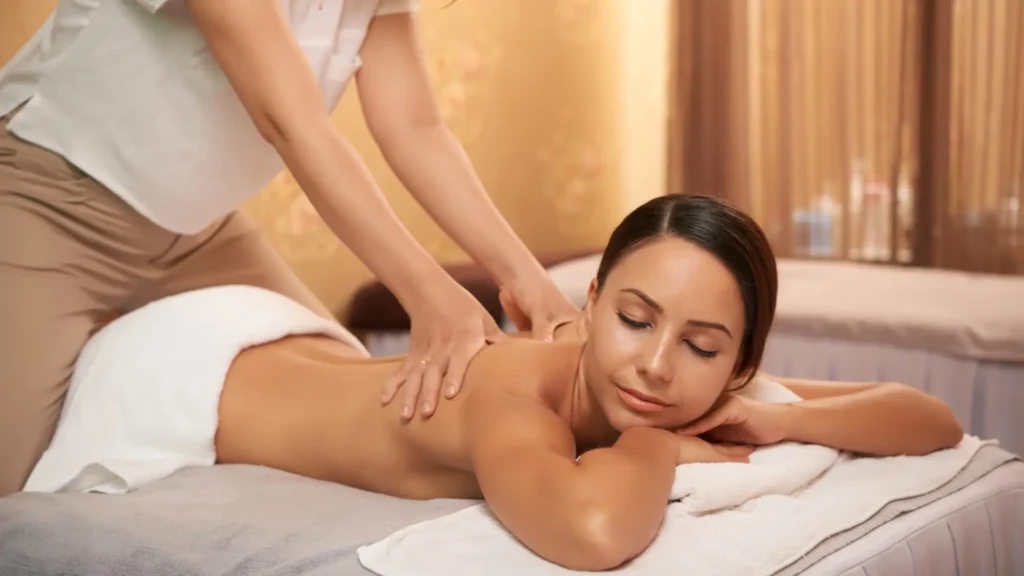Have you ever found yourself walking past a spa offering “Asian Massage” and wondered what that actually means? No, it’s not some mystical, ancient secret only known to a select few. It’s a broad term that encompasses a variety of massage techniques originating from Asia. And guess what? It’s not just for those looking to find their Zen; it’s for anyone who wants to feel better, physically and emotionally.
What is Asian Massage, Anyway?
When we talk about Asian massage, we’re diving into a world that combines centuries-old techniques with modern-day wellness goals. Originating from different parts of Asia—think China, Japan, Thailand, and even India—these messages focus on balancing your body’s energy while relieving tension and pain. So, if you’re curious about the meaning of Asian massage, it’s essentially a blend of tradition, therapy, and total relaxation.
Why Should You Care About the Different Types?
You might think a massage is just a massage, right? Wrong! Just like you wouldn’t order “European food” without specifying whether you want Italian pasta or French croissants, understanding the different types of Asian massages can help you get exactly what you’re craving.
Whether it’s the deep pressure of Shiatsu or the stretching techniques of Thai massage, each style has its own unique benefits. Plus, knowing what to ask for can save you from an awkward experience. Trust me, you don’t want to accidentally sign up for a “cupping session” thinking it’s a new type of coffee tasting!

So, stick around as we delve deeper into this fascinating world. We’ll explore the history, the types, and even the science behind Asian massage. Ready to embark on this wellness journey?
Let’s get started!
Jump to:
The Ancient Roots and Modern Relevance of Asian Massage
Let’s take a quick trip down memory lane to understand where Asian massage comes from and why it’s still a big deal today.
A Journey Back in Time
Asian massage isn’t some new-age fad that popped up overnight. Nope, it has roots that go way back—thousands of years. Imagine a time when emperors ruled China and sages wandered the forests of India.
That’s when the first seeds of Asian massage techniques were sown. These ancient practices were deeply intertwined with the philosophies and medical practices of the time. So, when we talk about Asian massage, we’re really talking about a rich tapestry of cultural wisdom and healing techniques.
The Asian Massage Evolution Express
Fast forward to today, and you’ll find that Asian massage has hopped on the evolution express. While the core principles remain the same, the practice has adapted to modern needs. For example, you might find a Thai massage therapist incorporating yoga stretches or a Chinese Tui Na practitioner using infrared heat. The point is that Asian massage has evolved without losing its soul.
Why Does This History Lesson Matter?
You might be thinking, “Cool story, but why should I care?” Well, understanding the history and evolution of Asian massage can actually enhance your experience. It’s like watching a movie and knowing the characters’ backstory—it just makes everything more meaningful.
Plus, when you understand the depth and diversity of Asian massage, you can better appreciate the skill and knowledge of your therapist. And who knows, you might even impress them with your newfound wisdom!

So, are you ready to move from history to the hands-on stuff? Let’s dive into the different types of Asian massage and see what makes each one special.
The A to Z of Asian Massage Types—Find Your Perfect Match!
You’ve got the history lesson and the context, and now it’s time to explore the smorgasbord of Asian massage types. Trust me, there’s something for everyone, whether you’re a newbie or a seasoned spa-goer.
1- Shiatsu: The Japanese Powerhouse
Ever heard of Shiatsu? No, it’s not a new sushi roll. It’s a Japanese massage technique that uses finger pressure to target specific points on your body. Think of it as acupuncture without the needles. Perfect for those who want to relieve stress but are scared of pointy things!
2- Thai Massage: It’s Like Yoga Without the Effort
If you love the idea of yoga but can’t quite get into the downward dog, Thai massage is your best friend. This technique involves a lot of stretching and pulling, but don’t worry—you just lie there while the therapist does all the work. It’s like having a personal yoga instructor, minus the sweat!
3- Tui Na: The Chinese Energizer
Feeling a bit sluggish? Tui Na, a traditional Chinese massage, might be just what you need. It focuses on balancing your Qi (energy) and involves a lot of kneading and tapping. Imagine a drum solo played on your back—that’s Tui Na for you!
4- Ayurvedic Massage: The Indian Herbal Haven
Ayurvedic massage is your go-to if you’re into all things herbal and natural. Originating from India, this technique uses a variety of aromatic oils and focuses on balancing your body’s energies. It’s like a spa day for your soul.
5- The Underdogs: Chi Nei Tsang, Foot Massage, Cupping, and More!
Let’s not forget the lesser-known but equally amazing types like Chi Nei Tsang (great for emotional release), Foot Massage (your feet will thank you), and Cupping (yes, it leaves marks, but it’s worth it). Each has its own unique benefits and quirks.
Why Variety is the Spice of Life
So, why should you care about all these different types of Asian massage? Because variety is the spice of life, my friends! Knowing your options allows you to tailor your massage experience to your specific needs. Do you have back pain? Try Tui Na. Need emotional healing? Chi Nei Tsang is your answer. The more you know, the better your experience will be.
Remember, what works wonders for your friend might not be your cup of tea. The beauty of Asian massage is its diversity, allowing you to find the perfect fit for your body and soul.
It’s time to delve deeper into what sets Asian massage apart from the rest.
What Sets Asian Massage Apart?
Okay, let’s keep this wellness train rolling! By now, you’re practically an expert on the types of Asian massages out there. But you might be wondering, “What makes Asian massage so special? Can’t I just get a regular ol’ Swedish massage and call it a day?” Well, you could, but then you’d be missing out on some truly unique benefits.
Let’s dig in!
It’s All About Energy, Baby! – (Balances Your Energy)
One of the defining features of Asian massage is its focus on energy balance. Whether it’s the Qi in Tui Na or the chakras in Ayurvedic massage, the goal is to get your energy flowing like a well-oiled machine. It’s not just about kneading away muscle knots; it’s about creating harmony in your body. And who doesn’t want to feel harmonious?

Pressure Points and Meridians: The Asian GPS
Ever wonder how Asian massage therapists seem to know exactly where your aches and pains are? That’s because they’re trained to understand pressure points and meridians—think of them as the body’s GPS. By targeting these specific areas, they can provide immediate and long-lasting relief. It’s like they have a map of your well-being!
Spice It Up: Herbs and Aromas
If you’ve ever walked into an Asian massage spa and thought, “Wow, it smells like heaven in here,” you’re not alone. Many Asian massage techniques incorporate herbs, spices, and aromatic oils to enhance the experience. It’s like aromatherapy and massage rolled into one blissful package.
The Human Touch: It’s More Than Just Technique
Sure, the techniques are great, but what really sets Asian massage apart is the human touch. Therapists often bring their own cultural nuances and personal flair to the table, making each session a unique experience. It’s not just a service; it’s a form of art.
So, it is not just about relieving physical tension; it’s a holistic approach that aims to balance your mind, body, and spirit. When all these elements are in harmony, you’ll find that life seems a little sweeter.
So, are you convinced yet? Let’s get into the benefits you can expect from an Asian massage session.
The Perks of Going Asian—Benefits You Didn’t Know You Needed!
You’ve got what makes Asian massage unique. But let’s get to the juicy part—what’s in it for you? Spoiler alert: It’s not just about feeling like a puddle of bliss (although that’s a pretty great perk, too). Let’s dive into the benefits that might just make you an Asian massage convert.
1- Stress Be Gone: The Ultimate Relaxation
Let’s start with the obvious. it is a stress-buster extraordinaire. Whether it’s Shiatsu’s rhythmic pressure or Ayurvedic massage’s soothing oils, you’re bound to leave the session feeling like a weight has been lifted off your shoulders. And let’s be honest, who couldn’t use a little less stress in their life?
2- Circulate to Celebrate: Improved Blood Flow
Ever feel like your body is moving in slow-mo? A good Asian massage can pump blood, improve circulation, and make you feel more energized. It’s like giving your body a mini reboot!
3- Aches and Pains? Not Today!
If you’re dealing with chronic pain, Asian spa can be a game-changer. Techniques like Tui Na and Thai massage are excellent for targeting specific pain points and relieving muscle tension. It’s like having a personal pain relief army at your fingertips!
4- Mood Booster: Happiness in a Session
Feeling a bit down in the dumps? Asian massage can also improve your mood by releasing endorphins, your body’s natural “feel-good” chemicals. It’s like a happiness injection minus the needles!
5- The X-Factor: Emotional and Spiritual Healing
Here’s something you won’t find in your average massage session: emotional and spiritual healing. Techniques like Chi Nei Tsang go beyond the physical to address emotional blockages. It’s not just about feeling good; it’s about feeling whole.
The benefits of Asian massage go beyond the surface. It’s not just a luxury you indulge in on vacation; it’s a holistic approach to wellness that can improve your quality of life in the long run.
So, are you ready to reap these amazing benefits? I know I am!
How Does Asian Massage Stack Up Against American Massage?
So you’re practically an Asian massage aficionado by now, but you might wonder, “How does it compare to the good ol’ American massage I’m used to?” Great question! Let’s dive into the differences that set these two apart and why you might choose one over the other.
The Technique Tango
First things first, let’s talk about techniques. American massages like the Swedish or Deep Tissue focus primarily on the muscles. It’s all about kneading out those knots and relieving muscle tension. Asian massage, on the other hand, goes beyond the muscles to address your energy flow and balance. It’s like comparing a physical workout to a full-body tune-up!
Cultural Influences: More Than Just a Rubdown
American massages are often seen as a luxurious way to relax, maybe something you’d treat yourself to on vacation or a special occasion. Asian massages, however, are deeply rooted in cultural traditions and philosophies. It’s not just a spa treatment; it’s a holistic approach to well-being.
The Personal Touch: One Size Doesn’t Fit All
In American massage, you’ll often find a more standardized approach. You book a Swedish massage, and you know what you’ll get, no matter where you go. With Asian massage, the experience can vary widely depending on the therapist’s personal style and cultural background. It’s like choosing between a chain restaurant and a mom-and-pop shop; both have their merits, but the latter offers a unique flavor.
The Mind-Body Connection: Not Just Skin Deep
While American massages are undoubtedly relaxing, they often focus on the physical aspects of tension relief. Asian massages take it a step further by aiming to balance your mental and emotional state as well. It’s not just about feeling good; it’s about feeling whole.
The beauty of having options is that you can choose the approach that best suits your needs. Want a straightforward muscle rubdown? Go American. Looking for a more holistic experience? Go Asian. Or better yet, why not both? Variety is the spice of life, after all!
So, are you Team Asian Massage or Team American Massage? Or maybe you’re a free agent, ready to explore all the options? Either way, Now you know What is the difference between Asian massage and American massage? Go and Choose the One that Fits your Desires.

Busting Myths—The Truth Behind Common Asian Massage Misconceptions
You’re all set for your Asian massage experience, but maybe you’ve heard some rumors or stereotypes that have you second-guessing. Fear not! I’m here to set the record straight and bust some common myths wide open.
The “Happy Ending” Stereotype: Let’s Clear the Air
Alright, let’s address the elephant in the room. Asian massages are often wrongly associated with “happy endings.” This stereotype not only disrespects the rich history and therapeutic nature of Asian massage but also undermines the therapists’ professionalism. So, let’s be clear: Asian massage is a legitimate therapeutic practice. Period.
It’s All the Same: The One-Size-Fits-All Myth
Some people think that all Asian massages are the same. Wrong! As we’ve discussed, there are various types, each with its unique techniques and benefits. Saying they’re all the same is like saying all pasta dishes are spaghetti. Nope, not even close!
No Pain, No Gain: The Torture Chamber Fallacy
You might have heard that Asian massages are excruciatingly painful. While it’s true that some techniques can be intense (looking at you, Thai massage), pain is not the goal. Therapists are trained to adjust their pressure according to your comfort level. So, if you’re not into the whole “pain is pleasure” thing, you’re in safe hands.
It’s Only for Adults: The Ageist Assumption
Think Asian massage is only for grown-ups? Think again! Techniques like Tui Na are often used in pediatric care in Asian countries. Of course, the approach is modified for younger clients, but it’s a testament to the versatility of Asian massage.
Being aware of these Asian spa therapy misconceptions not only prepares you for a better experience but also helps combat the stigmas often associated with them. The more you know, the better you can appreciate the true value of this ancient practice.

So, how are you feeling? Ready to debunk these myths in real time as you enjoy your authentic Asian massage experience? I thought so!
Key Takeaways and Conclusion: Your Roadmap to Asian Massage Bliss
Wow, what a journey, right? From the ancient roots to the modern-day practices, we’ve covered a lot of ground. But before we say our goodbyes, let’s recap the key takeaways that will guide you on your Asian massage adventure.
Key Takeaways:
1. Asian Spa Therapy is Diverse: From Shiatsu to Ayurvedic, there’s a type of Asian massage for everyone. Variety is indeed the spice of life!
2. It’s More Than Skin Deep: Asian massage goes beyond physical relief to offer emotional and spiritual balance. It’s a holistic approach to well-being.
3. Know Your Options: Understanding the different types of Asian massage can help you tailor your experience to your specific needs.
4. East vs. West: Asian and American massages offer different benefits and experiences. Why not enjoy the best of both worlds?
6. Bust Those Myths: It is a legitimate, therapeutic practice. Don’t let stereotypes and misconceptions cloud your judgment.
Conclusion: Your Passport to Wellness Awaits
So That’s all for today, guys! It’s the end of our comprehensive guide to Asian massage. Whether you’re a massage newbie or a seasoned spa-goer looking to try something new, this guide has hopefully armed you with the knowledge and enthusiasm to dive in.
Remember, wellness is not a destination; it’s a journey. And what better way to journey through life than with the occasional (or frequent, we’re not judging!) pit stop at an Asian massage spa? Your body, mind, and spirit will enjoy the experience.
So go ahead, book that appointment, and step into a realm of relaxation, rejuvenation, and maybe even a little enlightenment.
FAQs
Is Asian Massage Only for People of Asian Descent?
Absolutely not! It is for everyone, regardless of your cultural background. It’s a universal practice aimed at promoting well-being for all.
How Often Should I Get an Asian Massage?
The frequency can vary depending on your needs and the type of Asian massage you’re getting. Some people go weekly, while others find a monthly session sufficient. Listen to your body!
Can I Get an Asian Massage If I Have a Medical Condition?
If you have a medical condition, it’s crucial to consult with your healthcare provider and the massage therapist beforehand. Some techniques may be contraindicated for certain conditions.
Are There Any Side Effects?
Most people feel relaxed and rejuvenated after an Asian massage. However, it’s normal to feel a little sore or even emotional, especially if it’s your first time or if you’ve opted for a more intense technique.
Can Kids Get Asian Massages?
Yes, some techniques like Tui Na are even used in pediatric care. However, the approach is modified for younger clients, and parental consent is usually required.






